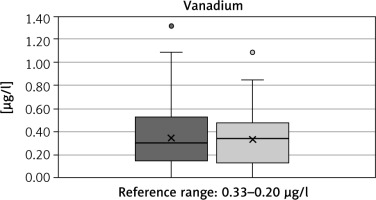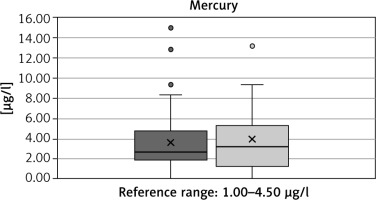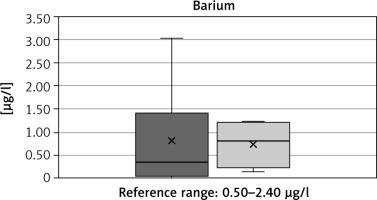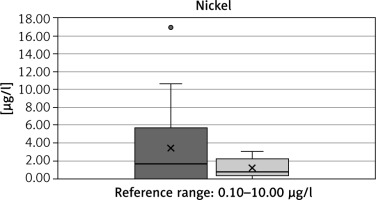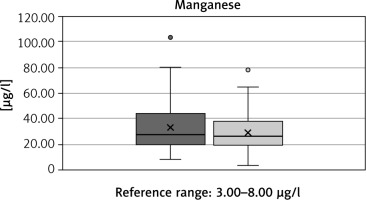Introduction
Gender medicine is a new revolutionary medical vision that approaches sociocultural and biological differences between men and women, studying the influence of these factors on the state of health and disease. Another important objective of this subspecialty relies on evaluating the different responses to therapies between 2 genders. The purpose of gender medicine is to ensure diagnostic-therapeutic appropriateness by making possible tailor-made treatments for the individual. In this sense, in order to collect evidence with high statistical significance, it is necessary to have numerically adequate study populations and well-structured research protocols.
The theme of prenatal and postnatal exposure to xenobiotics and heavy metals has been addressed by several studies in the literature that report conflicting evidence on sex and gender differences. Among the main topics covered we find epigenetic modifications in response to exposure to persistent organic pollutants [1], changes in neuro-psycho-motor outcome [2–4], variations in anthropometric variables [5, 6], alterations of puberal development [7], and different nephrotoxicity (investigated in rats) [8] and immunological alterations [9]. There are few studies focusing on transplacental permeability regarding the differences between male and female sex. However, among the few studies that have been conducted, Xueyan Li et al. [10] investigated levels of 8 metals in 64 mother-child pairs, noting greater permeability for silver (Ag) and titanium (Ti) in male infants.
On this scenario, the neurodevelopment project is a study born with the aim of investigating the correlation between prenatal exposure to heavy metals and neurodevelopment pathologies, which involved 217 mother-newborn couples with deliveries that occurred in the Gynaecology and Obstetrics Unit of Azienda Ospedaliera Ospedali Riuniti “Villa Sofia – V. Cervello” in Palermo, in the “Triolo Zancla” clinic in Palermo, and in “S. Antonio Abate Hospital” in Trapani, over the 2-year period 2017–2019. The large case studies, the large metal panel analysed, and the large number of variables investigated make this study population ideal for conceptualizing considerations related to the topic of gender medicine, investigating in particular the differences affecting metal-specific transplacental transport.
Material and methods
The study was approved by the competent ethics committees and was also the subject of a 2014 PSN funding at the U.O. of neonatology of Azienda Ospedaliera Ospedali Riuniti “Villa Sofia – V. Cervello” in Palermo.
For accession to the project, informed consent was requested, in which the purpose of the study was explained and where it was specified that the samples taken would be used exclusively for the approved research purpose without any emission of diagnostic reporting. In the same document it was stressed that sensitive data would be processed in compliance with current privacy rules. With the consent obtained, for each pair, the sampling of cord blood and hair of the mother (keratin matrix) was carried out.
The pair of samples was subsequently sent to the centre for Quality Control and Chemical Risk in Palermo, laboratory in The University Management, which is specialized in toxicological analyses for forensics. This laboratory carried out all the investigations in the second level or confirmed it with mass spectrometry – the method of choice when searching for trace elements in biological systems.
The procedure for the preparation and analysis of the various samples was carried out over the same 2-year period 2017–2019 of sampling and provided for washing phases (exclusively for the keratin matrix), mineralization, and finally reading with inductively coupled plasma-mass spectrometry (ICP-MS). The concentrations of the various metals were expressed in the form of a geometric mean, an ideal parameter given the amplitude of the case studies and the distribution of asymmetric values for all the metals investigated. Exposure was considered relevant if, for the metal investigated, the geometric mean had been higher than the physiological range present in the literature.
For each sample, the analysed metals were as follows: vanadium (V), chromium (Cr), manganese, iron, zinc, cobalt (Co), cadmium (Cd), copper (Cu), nickel (Ni), molybdenum (Mo), tin (Sn), strontium (Sr), selenium (Se), arsenic (As), barium (Ba), lead (Pb), and mercury (Hg).
After having acquired data on the presence or absence of metal elements in the 2 biological samples, the follow-up of the neuro-psycho-motor development of children began. Similarly, a future long-term follow-up should be considered because many neurodevelopment diseases are evident only in preschool or school age.
The study protocol described has made it possible to obtain several useful data to investigate any differences in the presentation of variables between male and female infants. The processing of the data that emerged was carried out with a careful study of the most relevant statistical parameters. The various correlations were investigated using appropriate contingency tables, which allowed the calculation of non-adjusted odds ratios (OR) with the corresponding confidence intervals, to study their significance. For simplicity, all correlations have been studied referring to the male sex. It was not considered necessary to carry out multivariate analyses, given the absence of significant confusing factors.
The physiological reference values used in assessing heavy metal levels by ICP-MS analysis are those provided by the Italian Society of Reference Values (SIVR) in 2011 (Table 1). Because no studies are available in the literature evaluating physiological levels on cord blood, the values used on whole blood were reported.
Table 1
Whole blood heavy metals [µg/l]
Secondary outcomes
The secondary outcomes are the metal level detected in the maternal keratin and the presence of neurobehavioural disorders.
Ethical approval
All procedures performed in studies involving human participants were in accordance with the ethical standards of the institutional and/or national research committee and with the 1964 Helsinki Declaration and its later amendments or comparable ethical standards.
Informed consent was obtained from all individual participants included in the study.
Funding: U.O. of Neonatology of Azienda Ospedaliera Ospedali Riuniti “Villa Sofia – V. Cervello” in Palermo.
Results
Characteristics of the study group
Table 2 shows data on the case studies under consideration. Based on the results of the analyses, the mother-newborn pairs can be classified into 3 different groups:
pairs in which, for one or more metals, only the level of exposure of the keratin sample (maternal) was found to be higher than the physiological reference range present in the literature,
pairs in which, for one or more metals, only the level of exposure of the cord blood sample (i.e. neonatal) was found to be higher than the physiological reference range in the literature,
pairs in which, for one more metal, both the maternal and neonatal sample were obtained beyond the physiological reference range.
Table 2
Characteristics of the study group
The third group is clearly the one with the highest exposure (high exposure phenotype) because the exposure of the mother has also been transmitted to the child due to a high placental permeability.
Main outcomes of the neurodevelopment project
The children included in the project (217 compared to 214 mothers; 3 pairs of twins were recorded) were born between 17 April 2017 and 25 February 2019. The last follow-up assessment of the neuro-psychomotor outcome was carried out in October 2021; thus, age of the children was between 2½ and 4½ years old.
Five neurodevelopmental problems were reported: 2 selective language disorders, 2 autism spectrum disorders, and one regression of psychomotor development in a child diagnosed with tuberous sclerosis; this is a genetic disorder with autosomal dominant transmission the manifestations of which may also include various degrees of neurodevelopmental pathology. Due to the defined genetic aetiology, this case was excluded from the results analysis.
With regard to autism spectrum disorders, the prevalence in our study population was comparable to the epidemiological data of the general population (estimated prevalence around 1% according to Diagnostic and Statistical Manual of Mental Disorders). Below (Table 3) the data concerning heavy metal levels in the 4 mother- child pairs with neurodevelopmental disorder are reported.
Table 3
Heavy metal levels (reported in µg/l) in mother-child pairs with neurodevelopmental problems
Statistical analysis did not reveal a statistically significant correlation between high-risk exposure to the heavy metals considered in our broad panel and neurodevelopmental disorders. The analysis of heavy metal levels in our samples showed that, for both mother’s hair and cord blood, the reference ranges still need to be improved to correlate significant clinical alterations. In fact, for some metals (such as lead and mercury for the mother’s hair and vanadium, chromium, and manganese for the cord blood), almost all the samples taken were above the reference ranges used.
Correlation between sex and transplacental permeability of heavy metals
Correlations between the male sex of the newborn and the possibility of re-entering the high-exposure phenotype were investigated. A positive correlation would indicate greater placental permeability to metals for male than for female infants. The metals with the highest number of high exposure pairs were Hg, Ba, V, Ni, and Mn, for which the ORs were calculated (Table 4). For each metal in question, the contingency tables followed by the non-adjusted OR with its confidence interval were reported. For the same metals, boxplots on the distribution of concentrations were reported (Figs. 1–5); for each metal in the graph, the physiological reference range used was specified (SIVR 2011).
Table 4
Correlation between male sex/gender and high exposure phenotype
All confidence intervals fall straddling the unit, and therefore none of the ORs were statistically significant. It follows that, according to our case studies, placental permeability to metals is not significantly different between couples with male infants and couples with female infants.
Comparison of average exposure levels in cord blood
Other considerations can be made about the levels of metals in cord blood, therefore considering only the exposure of the newborn, regardless of the maternal one. For each metal, the average level of exposure was calculated in the above sample for male infants and female infants, respectively. The parameter used was the geometric mean, given the normal asymmetric distribution of the values found (Table 5).
Table 5
Comparison between the values of male and female infants
The first 2 columns of the table show the geometric averages (and therefore the average level of exposure) of male and female infants, respectively. Looking at the penultimate column (in green) we can see the ratio of the average level of exposure of the 2 groups. It immediately emerges that the values are often comparable; in fact, the differences never exceed 15% (in favour of male infants for manganese and in favour of female infants for lead). In the last column we find the logarithm of the ratio of the 2 average exposure levels. Metals with a positive logarithm are those for which the average exposure level is highest among male infants; negative ones are those for which the average level of exposure is higher in female than in male infants. The first group includes V, Cr, Mn, Fe, Cu, Zn, Se, and Hg, while the second comprises Co, Ni, As, Sr, Mo, Cd, Sn, and Pb. Although the comparison is purely numerical, it is indicative that there are no significant differences between levels in male and female infants, supporting the hypothesis set out in the previous paragraph.
Moreover, correlations were investigated. In particular, the degree of correlation between male sex and the possibility of presenting out-of-range metal levels, always in relation exclusively to cord blood, was calculated. In this case, no statistically significant results emerged, powering the idea of the independence of the metal transplacental passage from the foetal sex. Additionally, the SGA phenotype correlated with male/female sex of the newborn. Similarly, no statistically significant result was obtained. Finally, the sex of the newborn correlated with malformations of various severity. Similarly with previous results, this shows no statistically relevant results. All these data are presented in the supplement material.
Discussion
For the reasons already mentioned in the section on the outcomes of the neurodevelopment project and the absence of physiological ranges for specific heavy metals in cord blood, it is not possible to correlate the levels detected with altered health outcomes in the study population. For this reason, this paper focused exclusively on the comparison of placental permeability between children of both sexes. Certainly, future studies with a great number of cord blood samples and their respective heavy metal levels are needed to establish a physiological reference range and to study the health outcome of newborns.
The study population under consideration provides very reliable assessments of the influence of the sex of newborns on different variables, in particular the prevalence of SGA infants, the prevalence of congenital malformations, and placental permeability to heavy metals. The latter aspect can be accurately evaluated thanks to the wide range of case studies available but, above all, thanks to the large metal panel examined (the study provided comprehensive information on 17 heavy metals). There are few literature studies on the subject, and these focus more on assessing the outcome of newborns than on the correlation between sex and placental permeability [11, 12]. In particular, Gómez- Roig et al., in a review published in 2021, assessed the impact of various environmental pollutants on the health of newborns. Regarding heavy metals, these elements have been associated with pre-eclampsia, intrauterine growth restriction, preterm birth, and altered thyroid function. As for the pathophysiological aspect, the intrauterine growth restriction appears to be related to placental accumulation [13]. In another interesting review published in 2021, Ghazi et al. reported that prenatal exposure to heavy metals, as well as air pollutants, was associated with altered placental DNA methylation globally and in the promoter regions of specific genes involved in various biological processes (such as circadian rhythm, DNA repair, energy metabolism, cell differentiation, inflammation, and organ development). Altered methylation of these genes has been associated in some studies with low birth weight, smallness for gestational age, and reduced head circumference. Moreover, few authors indicate that alterations in DNA methylation in the placenta are sex related. Other diseases of risk in children born with altered placental DNA methylation patterns include neurobehavioural abnormalities, cancer, and atopic dermatitis [14].
The impact of the study is evident, considering also the accuracy of the analysis method used; in fact, the ICP-MS technique is the only one capable of providing certainty in the identification of metals, as well as being extremely sensitive in a wide range, from ultra-traces to parts per million.
The correlations investigated using the calculation of OR with corresponding 95% CI were as follows: male sex – high exposure phenotype for heavy metals, male sex – out-of-range metal level in cord blood, male sex – SGA phenotype, and male sex – congenital malformations. The study of statistical variables did not produce any significant results, and therefore none of these correlations were positive.
Hence, from the case studies under consideration there would appear to be no correlation between gender and low weight by gestational age or between sex and congenital malformations. Another important piece of evidence concerns the transplacental transport of metals, which would appear not to show statistically significant differences between mother-infant couples with male infants compared to female infants.
As regards assessments based exclusively on cord blood, a numerical metal-by-metal comparison was also made between the values present in infants of both sexes. As a confirmation of the above, no significant differences were highlighted and no particular mode of transplacental transport emerged.
Given the relatively small number of the literature data, it is essential to confirm the aforementioned evidence with future studies, targeted and conducted with appropriate protocols.
Conclusions
This study embraces the gender and sexual medicine issue in a targeted situation. In particular, this is the first study assessing the sexual impact in transplacental metal transport. Although no statistically significance was recorded, the results are added to a new medicine issue for which data are increasing day by day. For this reason, these results are fuel for further studies assessing the impact of sex and gender in foetal medicine.












